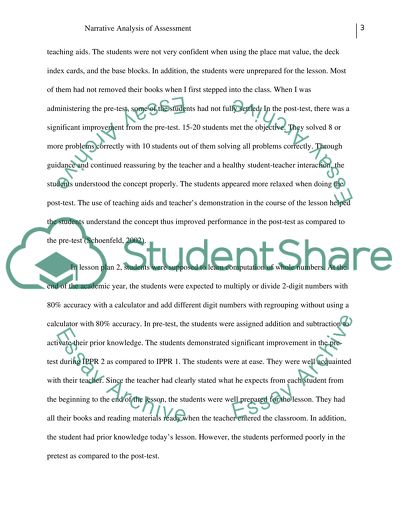Narrative Analysis of Assessment Assignment Example | Topics and Well Written Essays - 1250 words. Retrieved from https://studentshare.org/education/1450143-assessment-project-of-each-of-the
Narrative Analysis of Assessment Assignment Example | Topics and Well Written Essays - 1250 Words. https://studentshare.org/education/1450143-assessment-project-of-each-of-the.


